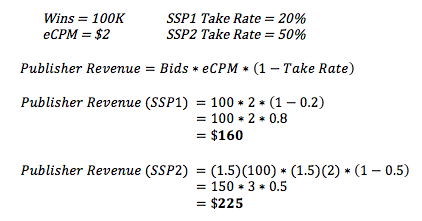Today, PubMatic released our newest white paper, Understanding Auction Dynamics, which examines the increasingly prominent role auction dynamics play in the online advertising ecosystem.
Programmatic auctions have evolved significantly with the proliferation of header bidding, but the auction dynamics – the forces that affect the price paid for an impression – are complex. To help provide some clarity around how auctions work, we discuss in the primer:
- How the rules of access to supply are changing;
- Why increased competition from header bidding results in higher eCPMs for publishers;
- Different bidding strategies and how they work;
- Key trends that may affect the future of programmatic auctions;
- The complex debate around auction types and integration methods; and
- How floors and fees affect seller and buyer
You can download the document here.
Transparency plays a crucial role in these auction transactions so I wanted to address the seller and buyer perspective on transparent take rates. I believe that the take rate discussions are missing the mark for both buyers and sellers, at least in the current market.
Seller’s Perspective
Let’s take a look from the seller’s perspective. You’re evaluating two SSPs. SSP1 has an expected take rate of 20 percent. SSP2 has what industry participants might consider an extremely high take rate of 50 percent. Your first reaction would be to go with SSP1, right? SSP2 is taking 150 percent more than SSP1. But what if I told you that SSP2 can generate 50 percent more winning bids at 50 percent higher prices? See the below example.
Now SSP2 is looking more attractive, isn’t it? In fact, it’s over 40 percent more attractive for the folks keeping score. Suddenly, take rate becomes dwarfed by the performance metrics that matter: top-of-the-funnel demand generation. Instead of dwelling on the difference between what a buyer pays and what ends up in the seller’s pocket, I propose that we start focusing on the difference between how much a buyer is willing to pay for an impression and how much of that value a seller can capture. An SSP that can drive 40 percent higher top of the funnel metrics than a competitor is more important to a publisher, even if it maintains a significantly higher take rate.
Buyer’s Perspective
From the buyer’s perspective, I can imagine many folks balking at the idea of losing 50 percent of their dollar to SSP2 when SSP1 is only taking 20 percent. The real question should be self-reflective: Why am I bidding more on SSP2? Presumably, SSP2 is creating some incremental value to warrant the higher price – whether it’s data fidelity, inventory quality, audience coverage, or something else. The buyer can translate this value into advertiser ROI and establishes a supply path preference.
Interestingly, some SSPs have been able to seduce buyers with the promise of transparent take rates, but the reality is more marketing message than substance. This message ignores a key factor for buyers, which is: How much of a bid reduction am I receiving? (More detail on bid reduction and fees is included in our Understanding Auction Dynamics primer).
If SSP1 with the lower take rate is charging the buyer 90 percent of their bid price through a combination of dynamic floors and modified second-price auctions, and SSP2 with the higher take rate is only charging them 60 percent of their bid price, the buyer must again ask: Am I willing to pay 50 percent more for the good feeling of a lower take rate? In some scenarios, SSPs have a huge incentive to charge buyers a price very close to their bid price. This will ultimately damage advertiser ROI, which should be the buyer’s primary concern.
Value Matters
The point is that buyer and seller preference should be a function of value, not purely take rate. Buyers get the unique opportunity to vote with their pocketbooks millions of times per second, and preference must be earned. Does an SSP’s take rate represent potential upside to buyers? Yes, and it’s for this reason that I believe it behooves buyers to signal stronger supply path preferences moving forward. On the publisher side, again, it’s about economics. While take rate is a factor in a publisher’s overall yield, it is only one of many. Top-of-the-funnel demand generation is a much bigger piece of the pie.
With all else being equal, the SSPs generating the greatest value for buyers and sellers will secure those relationships. In today’s programmatic environment, take rate is an output of smart business decisions, not an input.



